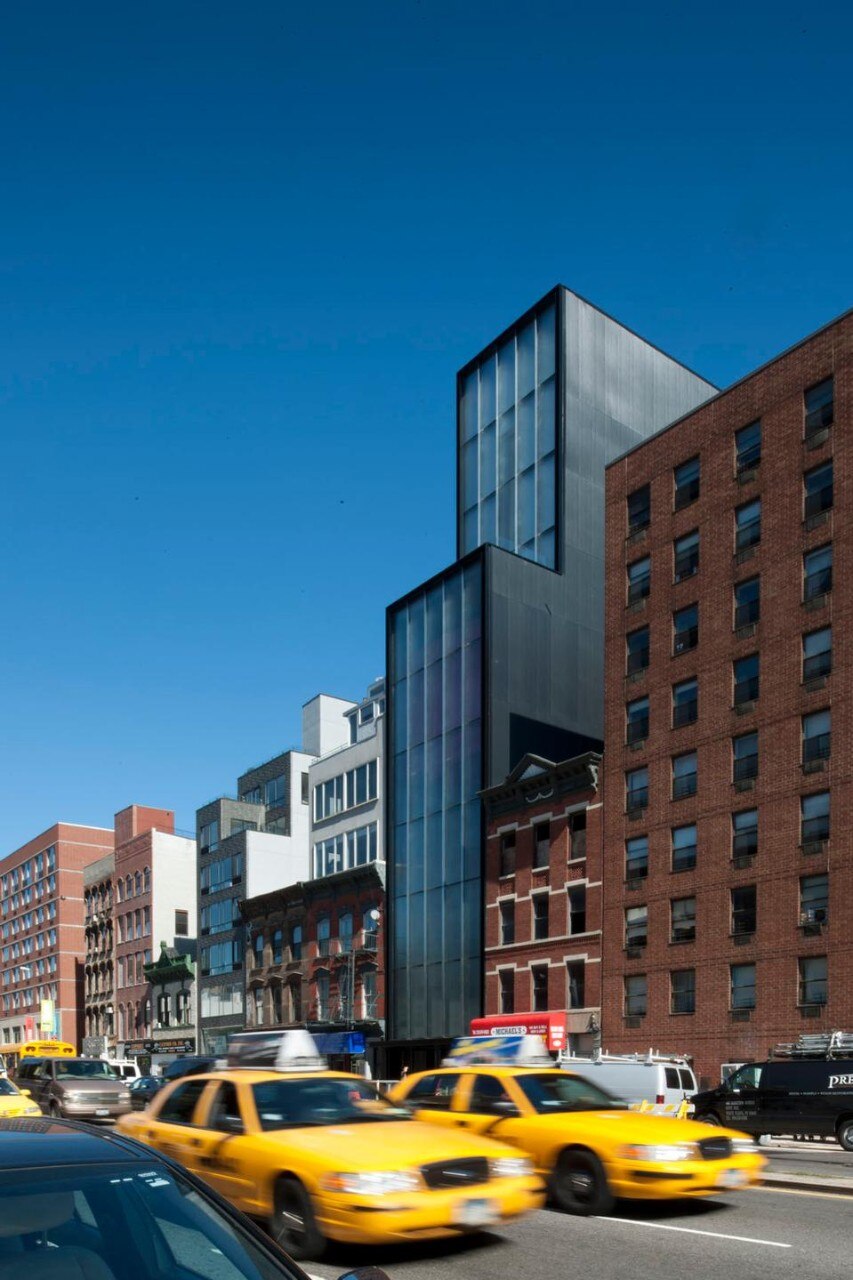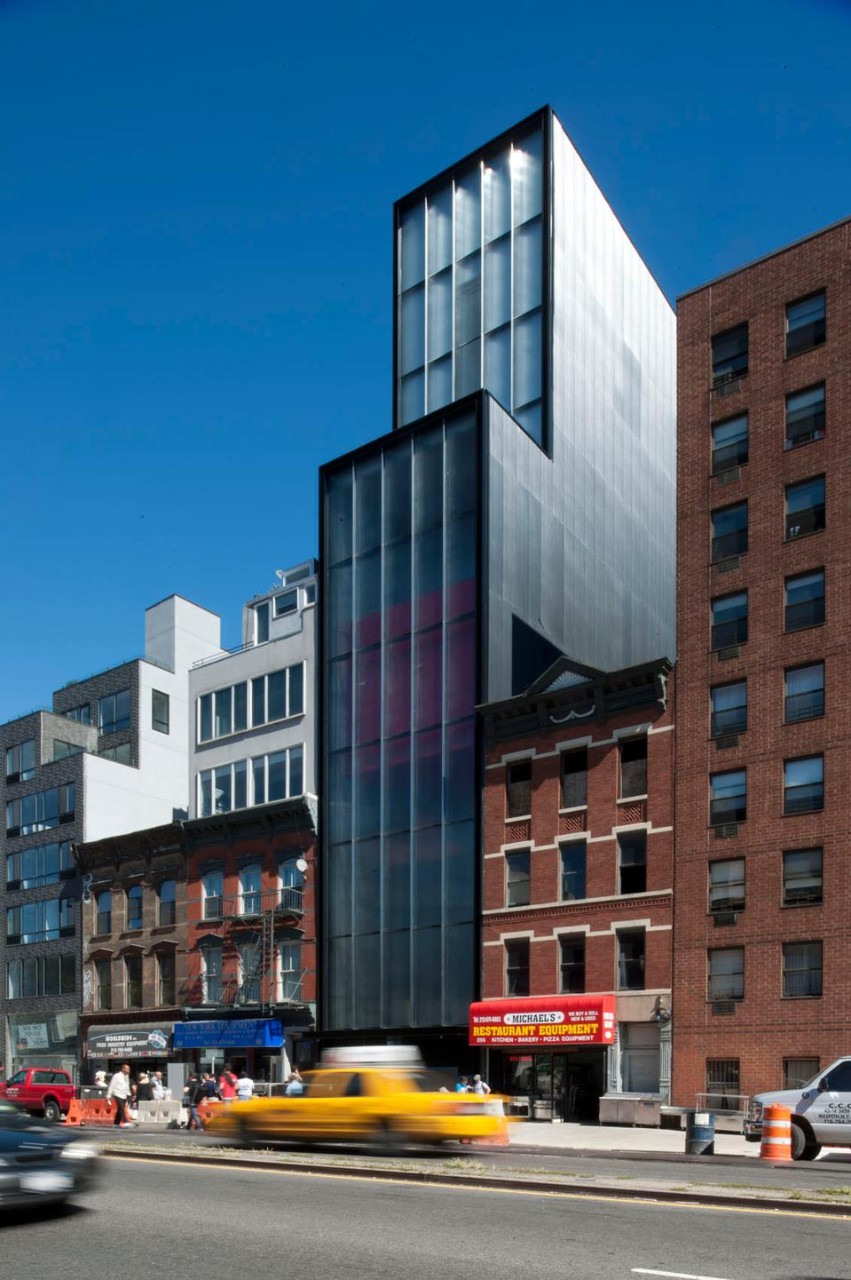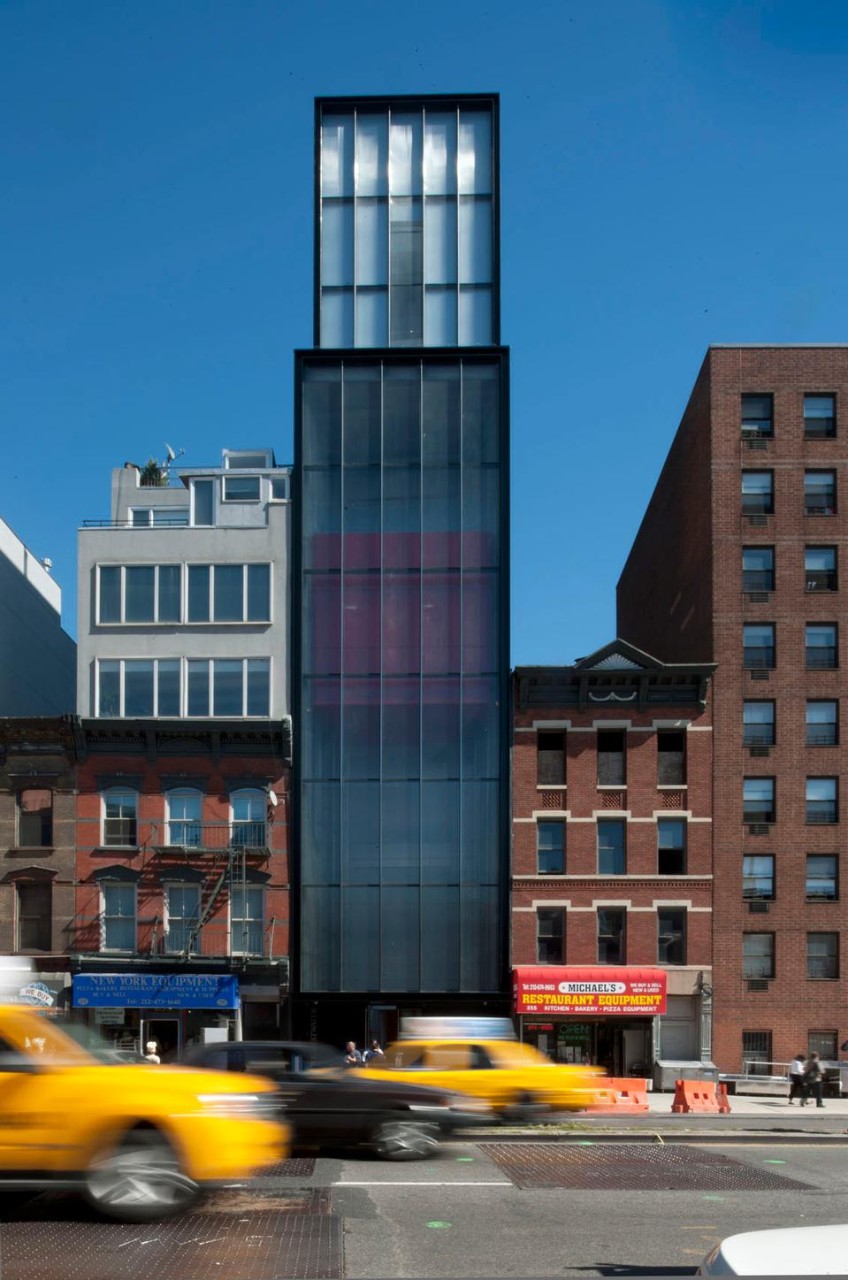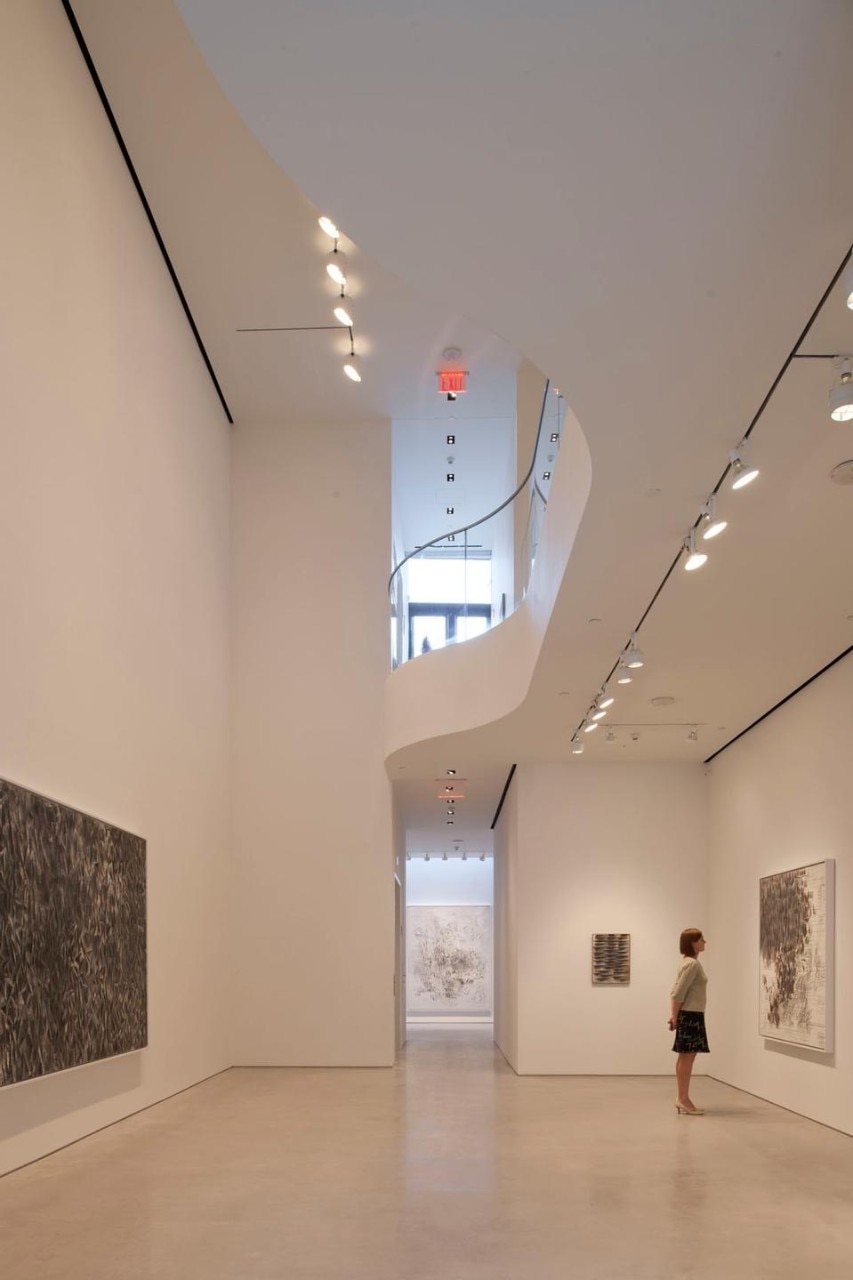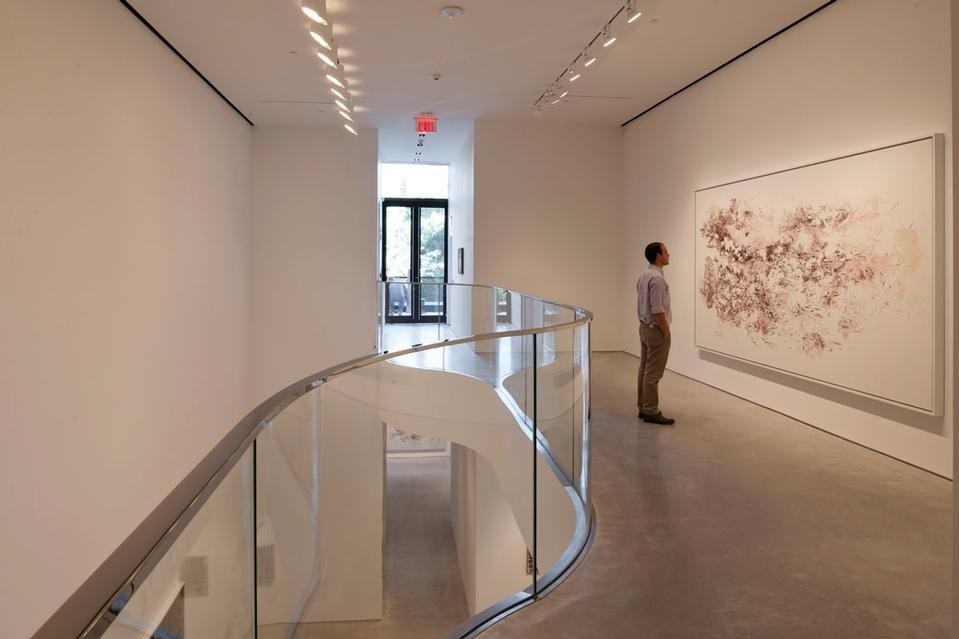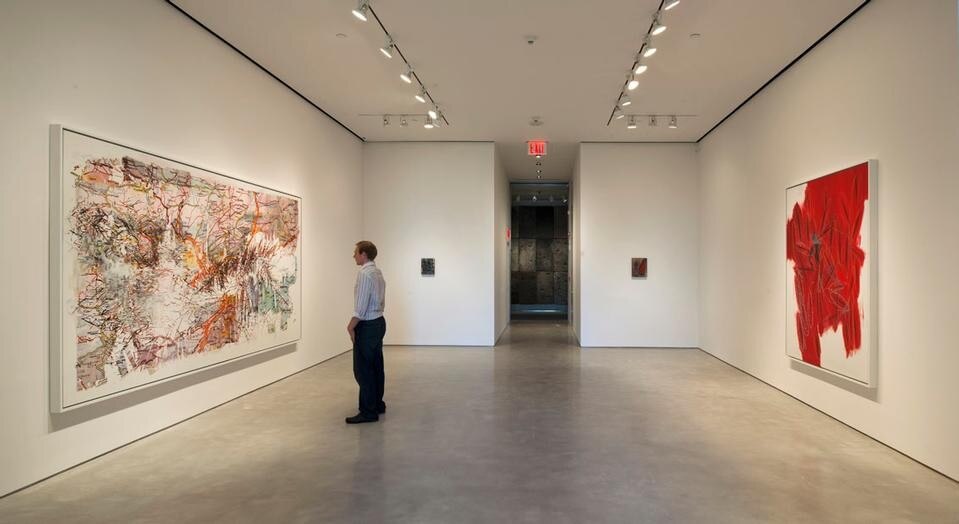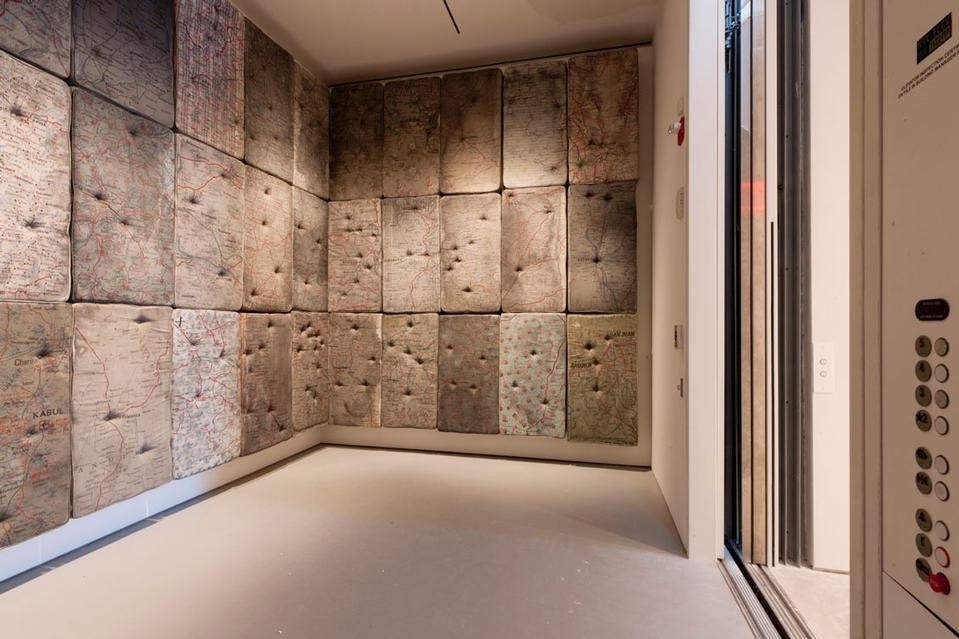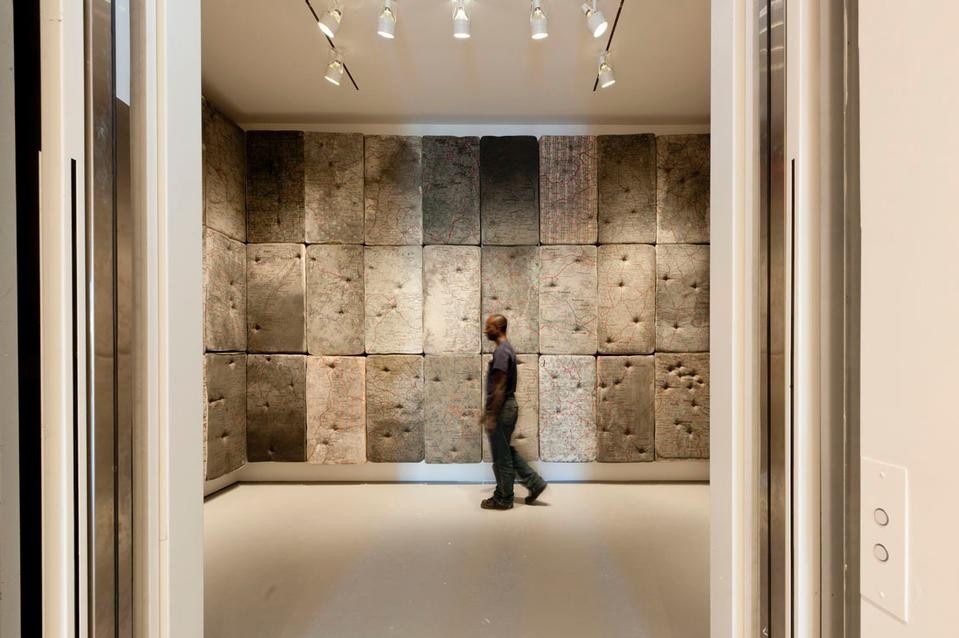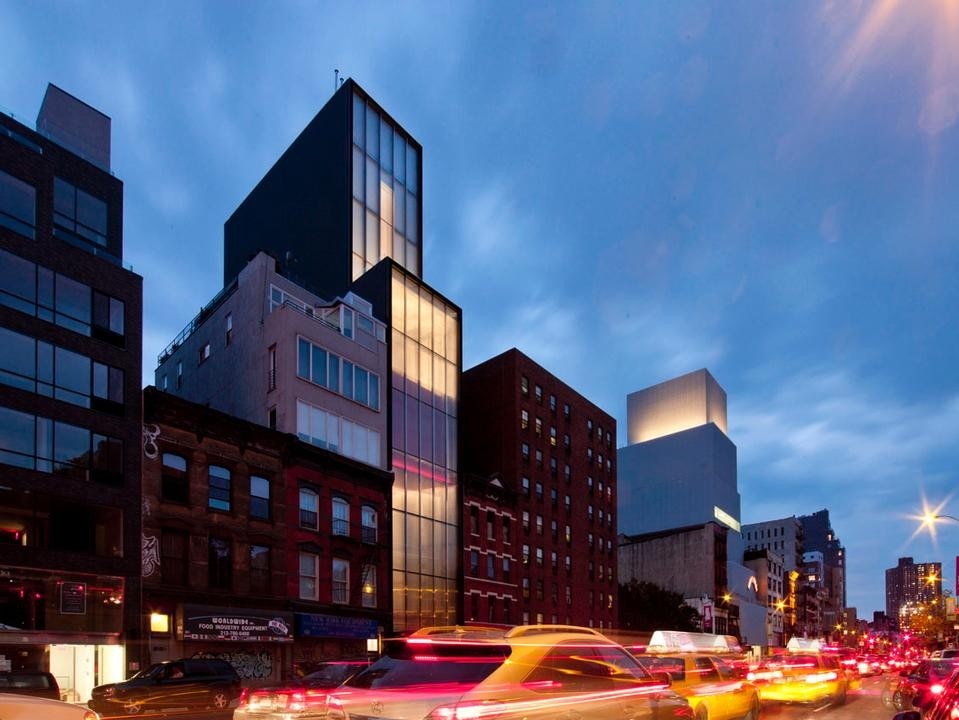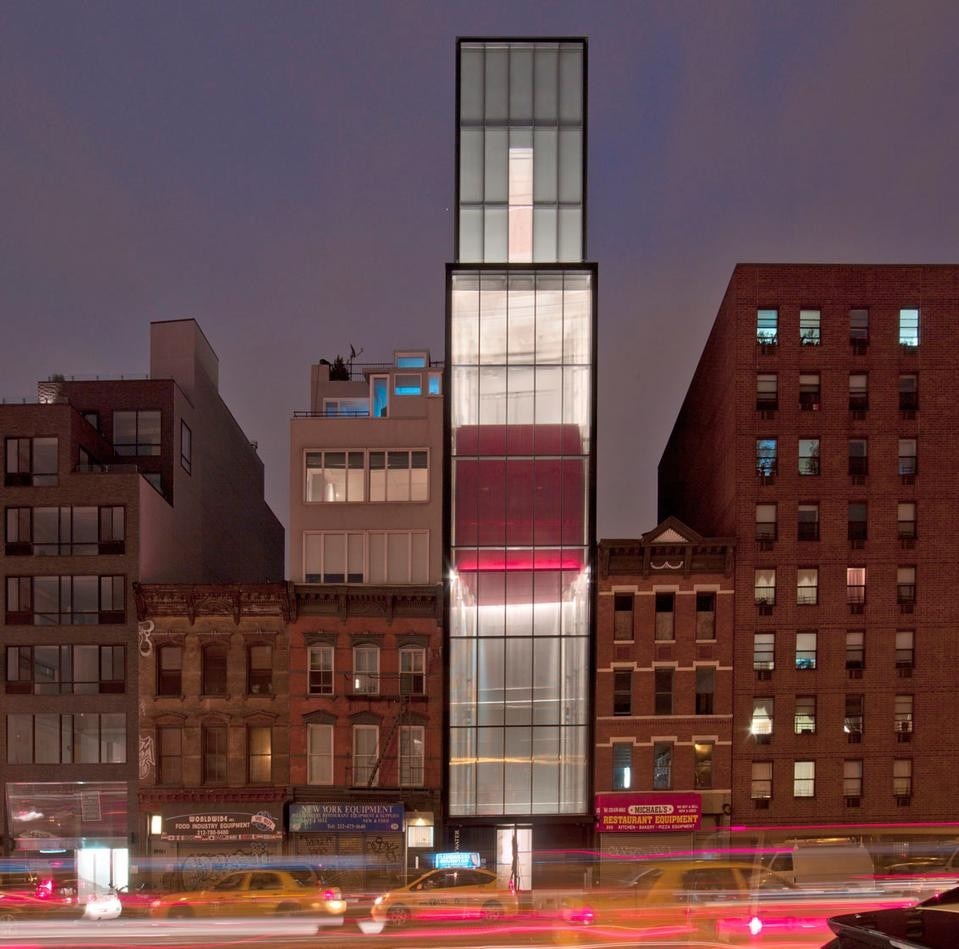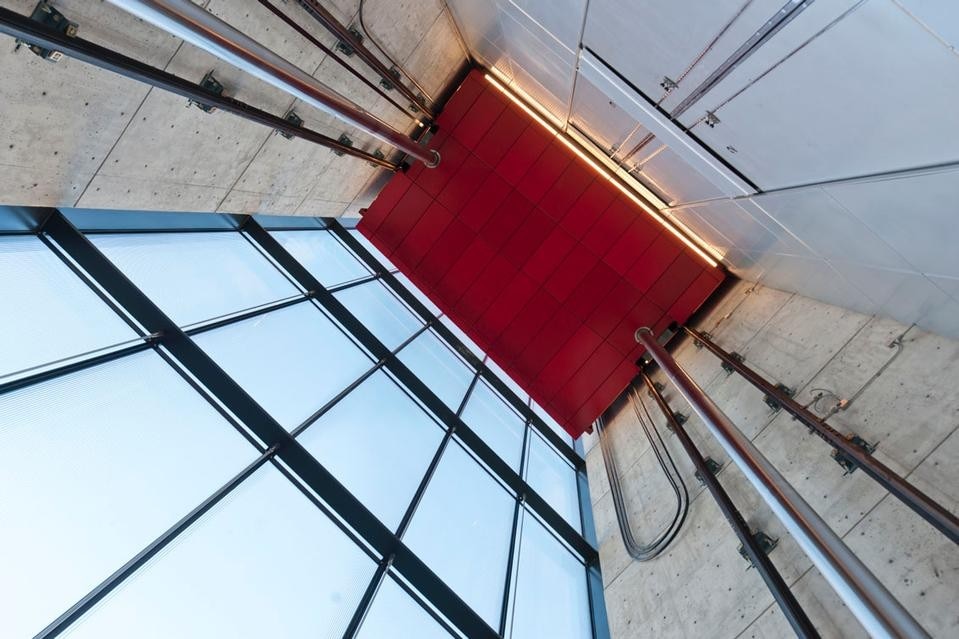Constrained by the 25ft (7.6m) x 100ft (30.5m) site, Foster + Partners had to think creatively about vertical circulation. The standard configuration of separate passenger and freight elevators, in addition to the two required fire stairs, would waste precious floor area. Their innovation was to create an experimental hybrid space combining circulation with exhibition functions, which they call a "moving room." This red floating box glides slowly up and down within a five-story-high light shaft, veiled from the street by a translucent membrane of CNC-milled, laminated glass panels.
The moving room does not descend to the street level, but hovers above the reception desk. In this way it creates a changing ceiling height in the vestibule, allowing more natural light to penetrate as it goes higher. The stainless steel hydraulic pistons, immaculately finished and polished almost like minimalist sculpture, exemplify Foster's characteristic treatment of naked hardware as high-tech glamour. Bare concrete side walls, red polycarbonate panels, and an all-aluminum east wall complete the macho material palette of this most unusual foyer/shaft, which is non-orthogonal in plan. Inside the gallery proper, one finds simple white walls and polished concrete flooring.
While the moving room creates an alluring spectacle when seen from the street, its programmatic role is less obvious. After all, the vaunted "flexibility" that it provides comes at a significant cost. Each of the four floors it serves loses 240 ft2 (22.3 m2) of exhibition space, and a gallery employee must operate it continuously. Thus its real function is to provide an alternative art-viewing experience. The volume it encloses—measuring 12ft. (3.7m) x 20ft. (6.1m) x 13ft. (4m) (height)—is more intimate and challenging than the neutral gallery spaces. It appears uncannily at the edge of the gallery, a mobile void inviting you in only to swallow you up. When the doors close and it travels up or down, it evokes the liminal zone of the elevator, a kind of Deleuzian "any-space-whatever" in which the viewer is left to contemplate art in between the moments of departure and arrival.
For the inaugural exhibition of works by Guillermo Kuitca, the moving room serves admirably for the full-height installation of Le Sacre (1992), the artist's famous series of 54 painted mattresses. Typically it just shuttles between the first two levels above the ground, which (along with the ground level) are open to the public. A curving mezzanine platform overlooks the double-height, ground-level exhibition space. To the rear, an open-air sculpture terrace opens onto a park. Natural light filters in through east-facing windows, which also overlook the park. The building's middle two levels are reserved as private galleries, while the upper three levels, visibly set back from the street, house administrative and library functions. Art storage space is in the basement.
The building is conceived overall as a white box inside a black box. Corrugated black metal panels clad the side elevations, concealing a structural concrete frame which surrounds the textured glass Bowery façade. At street level, glowing light strips accentuate the entrance. The entire storefront—including the door—is covered with jet-black vertical ribbing. All these industrial black surfaces serve not only to highlight the red box and the white interior by way of contrast, but also to imbue the gallery with an air of Bowery toughness that blurs seamlessly with art-world chic.
